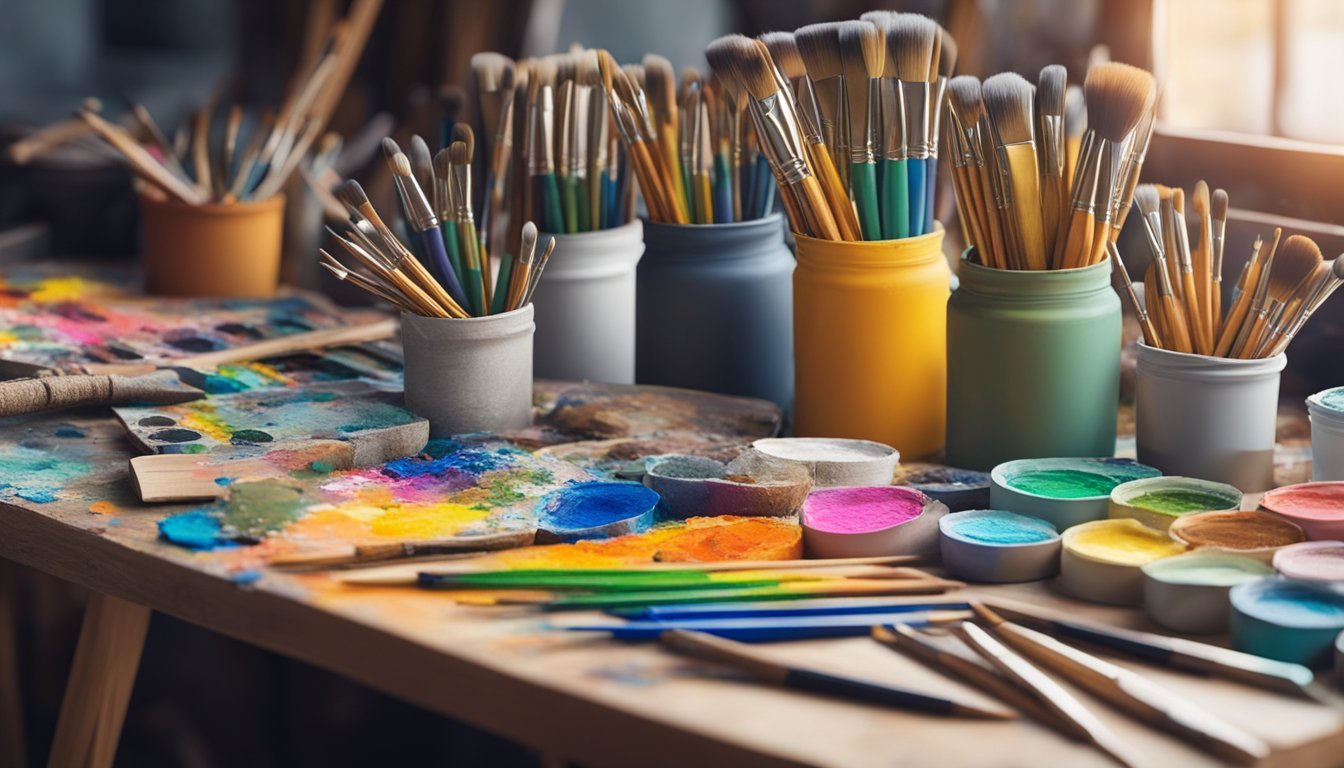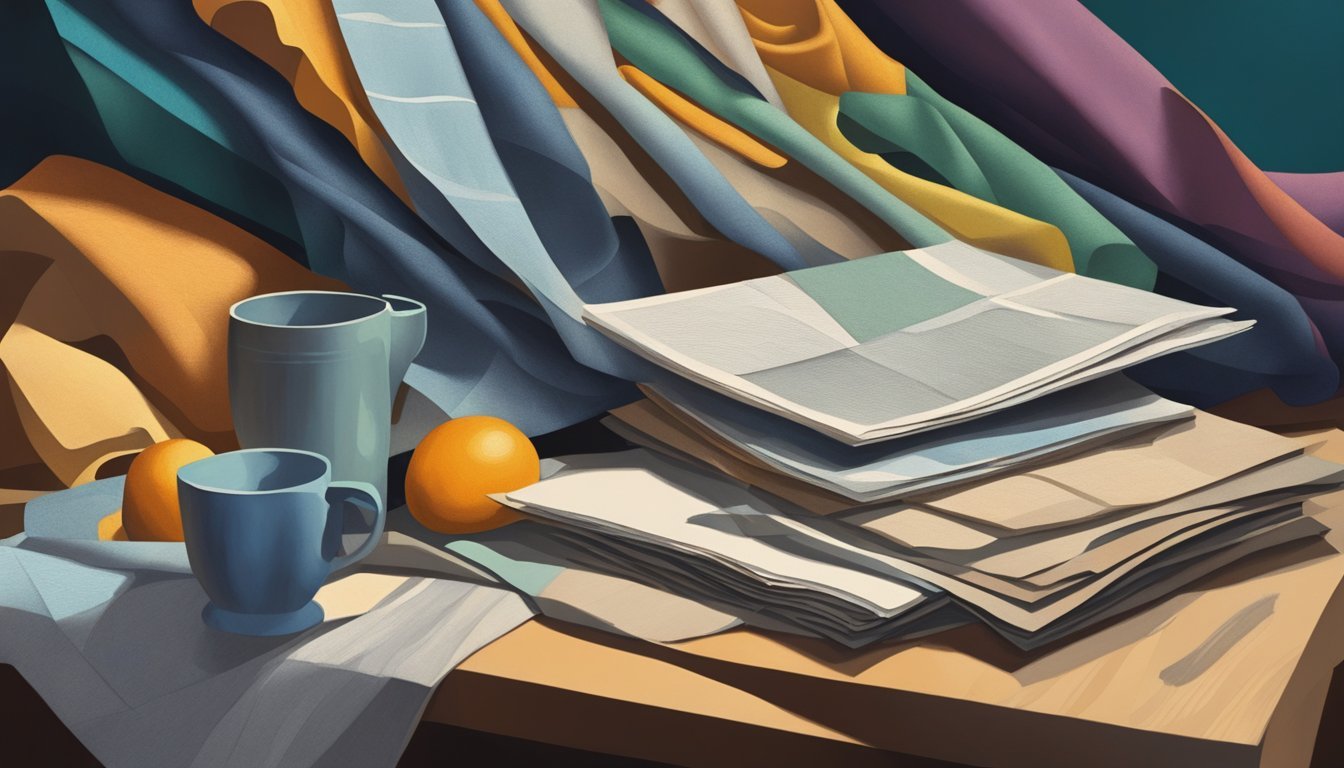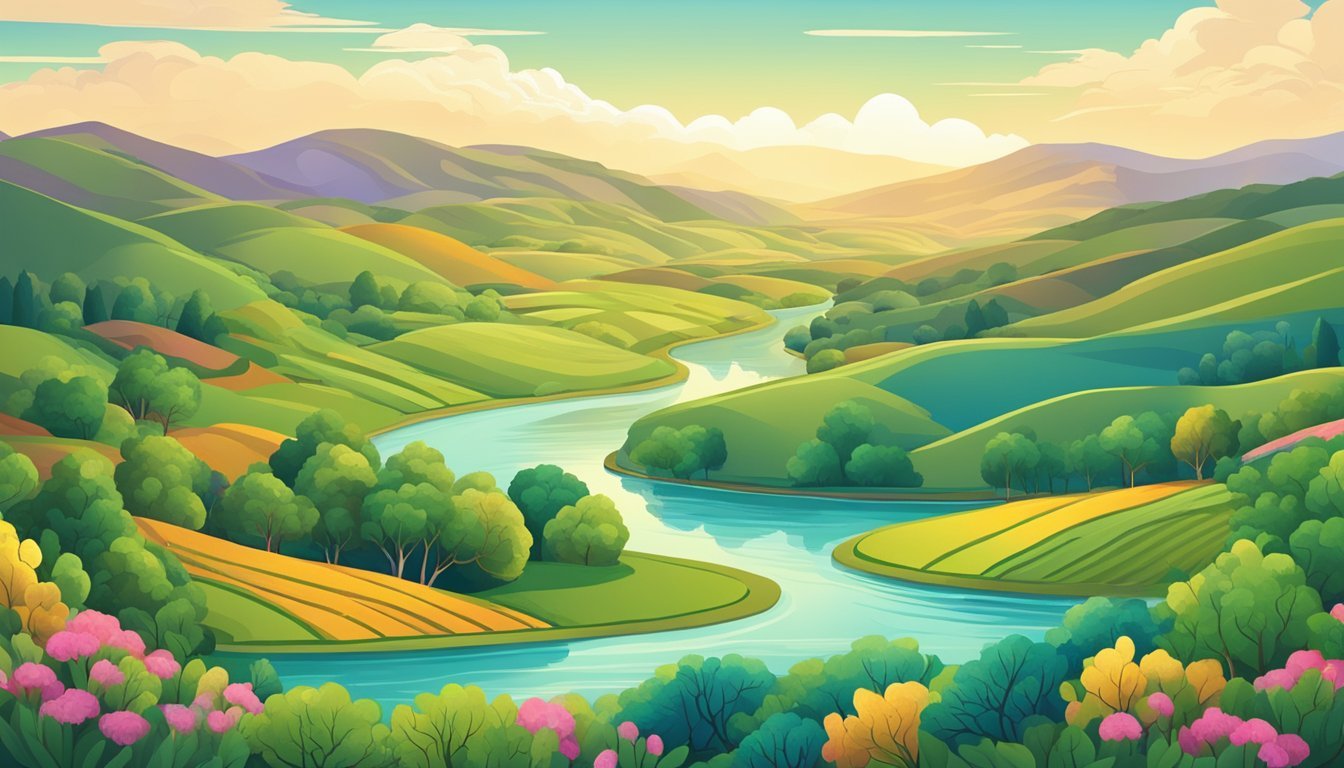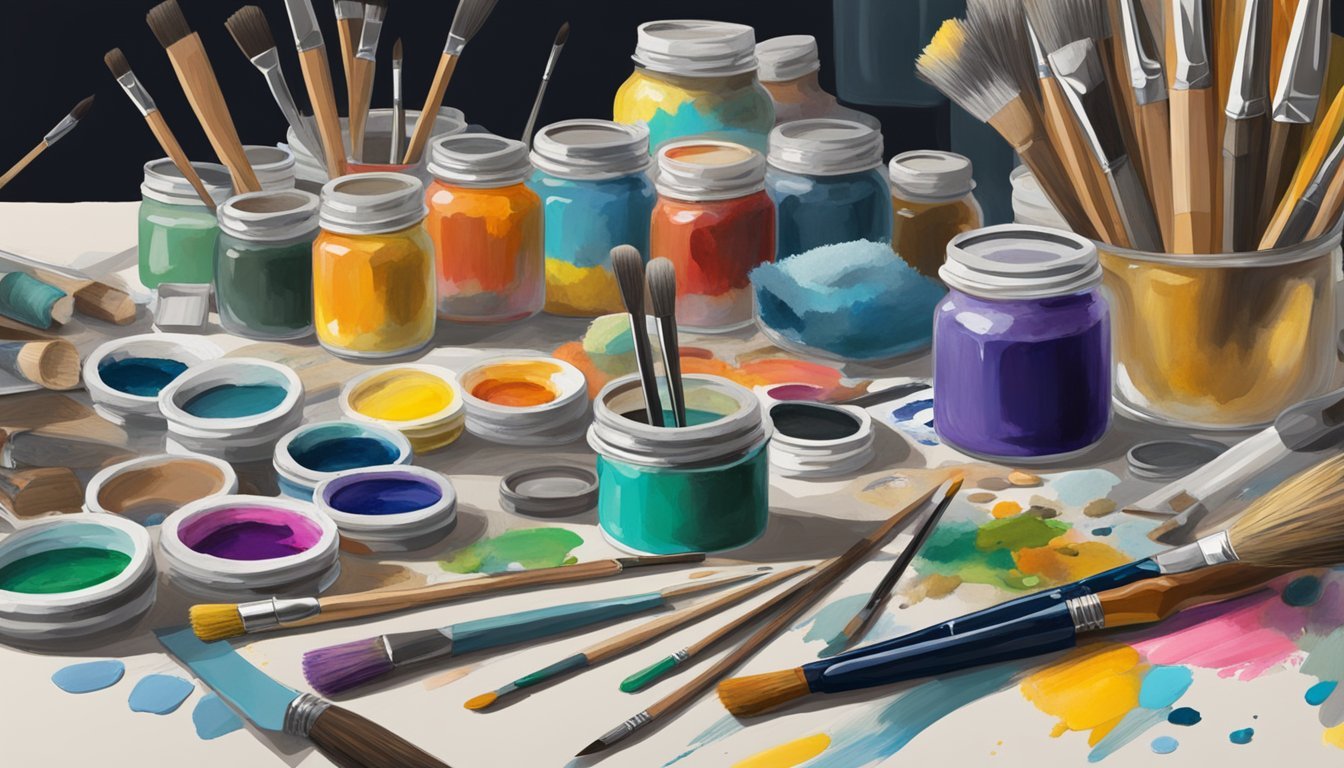Adding texture and depth to your paintings can really elevate your artwork, making it visually engaging and compelling.
It’s all about creating layers and dimension that draw the viewer in. The right techniques can transform a flat canvas into a vibrant piece that tells a story.

Exploring different methods to achieve texture can be a fun journey in your artistic development.
Whether you’re a seasoned painter or just starting out, various approaches can be used to enhance your creations and give them a unique touch.
1) Use a palette knife for bold textures
Using a palette knife can transform your paintings with bold textures.
This tool allows you to apply paint thickly, which creates dramatic depth on the canvas.
Start by loading your knife with a substantial amount of paint.
The thick application mimics the styles of Impressionist artists, giving your work a lively and dynamic quality.
You can experiment with different techniques.
Try using the edge for sharp lines or the flat side for broader strokes.
This versatility can lead to unique patterns and textures.
Don’t be afraid to mix colors directly on the canvas by scraping and layering with your knife.
This method introduces richness and complexity to your artwork.
Additionally, you can use the palette knife for details.
The tip can apply fine lines or highlights, while the spatula-like motion is perfect for broader areas.
This combination will elevate your painting’s overall feel.
2) Incorporate sand or grit mediums
Using sand or grit mediums can add an interesting tactile quality to your paintings.
These materials create a unique texture that catches light and draws the viewer’s eye.
You can mix sand directly into your paint for a gritty finish.
Choose the texture and color of the sand based on the desired effect.
Fine sand will offer subtlety, while coarse sand will create a bolder look.
Another option is to apply sand or grit as a separate layer.
After laying down your paint, sprinkle sand onto the wet surface.
This method lets you control how much texture is visible.
Experimenting with grit mediums can also enhance the depth of your work.
You might find that using different colors or sizes of sand adds complexity, making your pieces more engaging.
Don’t hesitate to combine sand with other materials, like acrylic gel mediums, for added dimension.
This can lead to exciting results you wouldn’t get from paint alone.
Incorporating grit can elevate your artistic style and open up new avenues for creativity.
Have fun with it!
3) Experiment with impasto techniques
Impasto is a fantastic way to add texture to your paintings.
By applying thick layers of paint, you can create a three-dimensional effect that really makes your artwork pop.
Start by selecting a medium like oil or acrylic.
Both work well with impasto techniques.
You’ll want to use a stiff brush or a palette knife to apply the paint directly from the tube or mixed with a thickening medium.
Layering is key.
Begin with a thin base coat and gradually build up thicker layers.
This will add depth and movement to your piece.
Don’t be afraid to experiment with colors, as layering different shades can create exciting visual effects.
You might also try different tools for application.
Each tool will give you a unique texture.
Just remember to have fun and let your creativity flow.
Impasto can transform your artwork, making it lively and engaging.
Layer translucent glazes
Using translucent glazes can really enhance the depth in your paintings.
This technique involves applying thin, transparent layers of paint over dry layers.
It adds a rich, luminous quality without overpowering the original colors.
To get started, pick a glazing medium that suits your paint type.
Mix it with your paint to create a transparent wash.
You’ll find that this method allows the colors beneath to influence the final outcome.
Applying glazes can also help unify your painting.
If you have areas that feel disconnected, a gentle glaze can tie them together beautifully.
Just remember to work in thin layers.
You can experiment with different color combinations, too.
Layering various hues invites complexity and visual interest.
With translucent glazes, you can transform your artwork into a more dynamic piece without losing the original intent.
5) Add fabric or paper elements

Incorporating fabric or paper into your paintings can significantly enhance texture and depth.
You can use materials like old fabrics, sheet music, or even magazine clippings.
Start by selecting pieces that resonate with your artwork.
Arrange them on your canvas to find a layout that feels right.
You can glue them down using a medium suitable for your painting surface.
Once secured, you can paint over the fabric or paper.
This creates a unique texture while blending the elements into your overall composition.
Experiment with layering different types of fabric or paper to add complexity.
Different textures will interact with light and shadow, making your art more engaging.
Remember, the goal is to add interest, so don’t be afraid to play around.
It’s all about finding the balance between your chosen materials and your painting style.
Understanding Texture And Depth

Texture and depth are crucial elements in your paintings that can elevate your artwork from flat to dynamic.
Grasping these concepts can transform your approach, so let’s break them down.
Defining Texture In Art
Texture refers to the surface quality of your painting.
It encompasses how you manipulate paint and materials to create visual interest.
- Types of Texture:
- Actual Texture: This is the physical quality you can feel, like brush strokes or added materials.
- Implied Texture: This is visual texture created through techniques like shading or patterning.
Tools like palette knives or unconventional materials like sandpaper allow you to build actual texture.
You might also experiment with different brush techniques.
The combination of these approaches can dramatically change the feel and look of your work.
Importance Of Depth In Paintings
Depth gives your artwork a sense of dimension and space, making it more engaging.
It draws the viewer in and creates a narrative within your composition.
To achieve depth:
- Layering: Build up layers of color and texture. This not only adds richness but also visual complexity.
- Contrast: Play with light and dark colors to help elements pop forward or recede back.
Incorporate techniques like glazing or scumbling to add variety.
These methods enhance the three-dimensional illusion in your paintings.
By focusing on both texture and depth, you can make your art resonate more powerfully with viewers.
Techniques For Creating Texture

Creating texture in your paintings can significantly enhance their visual appeal.
Here are two effective methods that can bring depth and interest to your artwork.
Using Impasto For Texture
Impasto is a technique where you apply paint thickly on the canvas.
This method allows the brush strokes or palette knife marks to be visible, adding a unique dimension to your piece.
To achieve this effect, use heavy-bodied acrylics or oils.
You can build up layers, allowing the paint to dry before adding more for added depth.
Experiment with tools such as palette knives or even your fingers to manipulate the paint.
The texture creates shadows that shift as the light changes, bringing your painting to life.
Incorporating Mixed Media
Mixed media involves combining different materials with paint to create diverse textures.
You can use items like sand, fabric, or paper to add unique surfaces to your artwork.
Start by applying a base layer of paint.
While it’s still wet, press in your chosen materials.
After everything dries, paint over your work, allowing some of the textures to show through.
This method not only enhances depth but also encourages creativity.
The possibilities are endless, so don’t hesitate to experiment with various media, textures, and techniques to find what resonates with your style.


